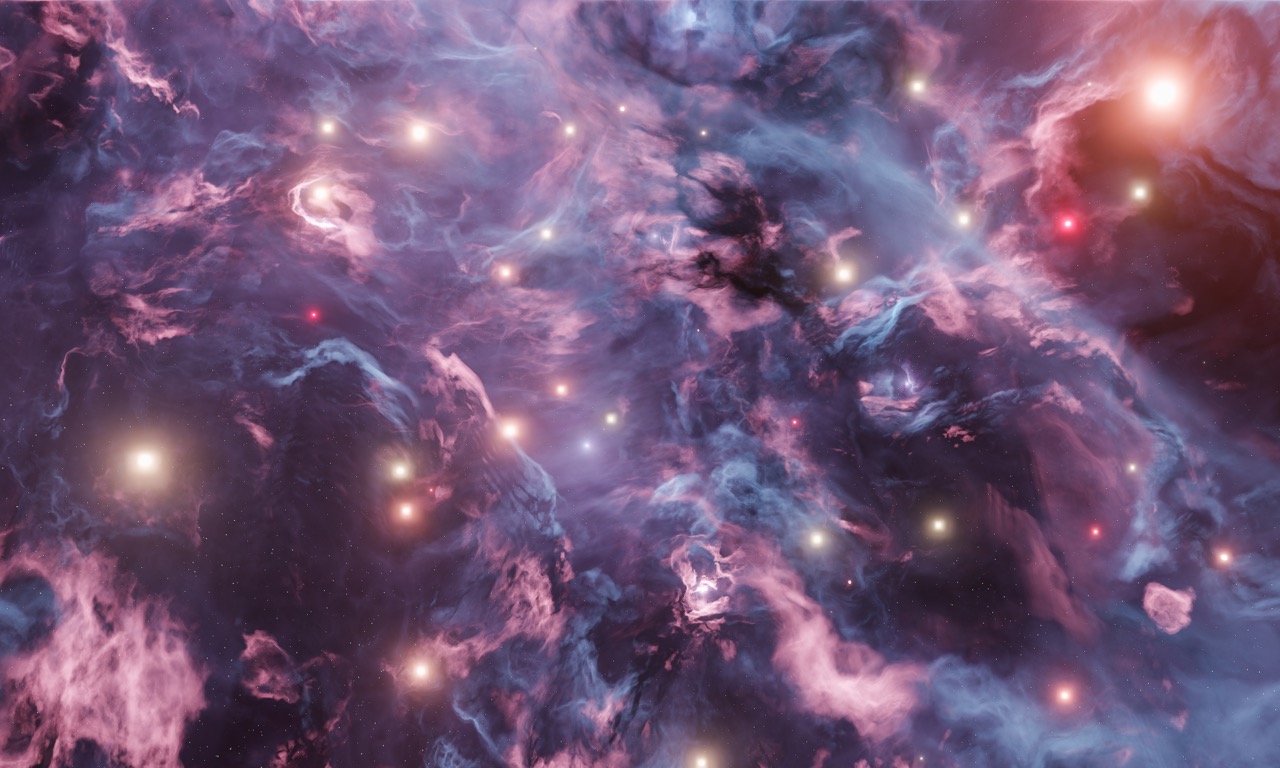Dark Matter: The Invisible Skeleton of the Universe

A Hidden Force Revealed
In the vast expanse of the cosmos, a mysterious and invisible force known as dark matter lurks, weaving a web that holds galaxies together and defines the very structure of the universe. In this article, we delve deep into the enigmatic world of dark matter, exploring its discovery, properties, and the ongoing quest to understand this elusive cosmic skeleton.
Unmasking the Cosmic Enigma: The Discovery of Dark Matter
A. Fritz Zwicky: The Pioneer of Dark Matter
In the 1930s, Swiss astronomer Fritz Zwicky observed something peculiar while studying the motions of galaxies within the Coma Cluster. He noticed that the visible matter in these galaxies, such as stars and gas, could not account for the gravitational forces observed. Zwicky hypothesized the presence of unseen “dark” matter, a groundbreaking idea that laid the foundation for dark matter research.
B. Vera Rubin and Galactic Rotation Curves
Fast forward to the 1970s, when astronomer Vera Rubin made a startling discovery while examining the rotation curves of spiral galaxies. Contrary to expectations, she found that the velocities of stars did not decrease with distance from the galactic center. This observation hinted at the presence of an unseen mass—dark matter—surrounding the galaxy and influencing its rotation.
Delving into the Shadows: Properties of Dark Matter
A. Invisible to the Electromagnetic Spectrum
Dark matter does not emit, absorb, or reflect light, making it undetectable through conventional telescopes. This elusive nature stems from the fact that dark matter does not interact with the electromagnetic force, which governs light and other forms of electromagnetic radiation.
B. Gravitational Interaction: The Key to Detection
Though dark matter evades direct observation, its presence can be inferred through its gravitational effects on visible matter, such as the bending of light from distant galaxies (gravitational lensing) and the aforementioned galactic rotation curves.
C. A Dominant Force in the Cosmos
Despite its invisibility, dark matter plays a crucial role in the universe. It is estimated to comprise around 27% of the total mass-energy content of the universe, far surpassing the 5% attributed to ordinary matter like stars, planets, and gas.
The Great Search: Identifying the Nature of Dark Matter
A. WIMPs: A Leading Candidate
Weakly Interacting Massive Particles (WIMPs) are among the most promising candidates for dark matter. These hypothetical particles would only interact through gravity and the weak nuclear force, making them difficult to detect. Numerous experiments, like the Large Hadron Collider, are currently searching for evidence of WIMPs.
B. Axions: An Alternative Possibility
Another potential candidate for dark matter is the axion, a hypothetical particle initially proposed to solve issues in quantum chromodynamics. Axions are theorized to be low-mass, nearly invisible particles that could make up dark matter. Experiments like the Axion Dark Matter eXperiment (ADMX) aim to detect these elusive particles.
C. Alternative Theories
While WIMPs and axions are the leading contenders, alternative theories also exist. Some researchers propose that dark matter consists of primordial black holes, while others argue for modifications to our understanding of gravity, such as Modified Newtonian Dynamics (MOND).
The Future of Dark Matter Research
A. Ongoing and Upcoming Experiments
As the search for dark matter continues, new experiments like the Dark Energy Survey, the Euclid space telescope, and the Large Synoptic Survey Telescope (LSST) are poised to shed more light on this cosmic enigma. These cutting-edge projects aim to refine our understanding of dark matter’s distribution, properties, and possible particle nature.
B. Implications for Cosmology and Astrophysics
Unraveling the mystery of dark matter will have profound implications for our understanding of the universe. It will not only help explain the formation and evolution of galaxies but also offer insights into the nature of dark energy, which drives the accelerating expansion of the universe.
C. A Glimpse into the Unknown
As scientists venture deeper into the uncharted territory of dark matter, they continue to develop innovative technologies and techniques to detect this elusive substance. The discovery of dark matter’s true nature promises to reshape our understanding of the cosmos and unlock the secrets of the invisible skeleton of the universe.
A Universe Waiting to Be Discovered
Dark matter, the invisible glue that binds our universe together, remains one of the most captivating and enigmatic subjects in modern science. As researchers continue their relentless pursuit of the truth, each new discovery brings us one step closer to understanding this cosmic mystery. Through the combined efforts of cutting-edge experiments, innovative theories, and the tireless work of scientists around the globe, the veil shrouding the invisible skeleton of the universe is slowly being lifted, promising a future of exciting discoveries and deeper comprehension of the cosmos.
📚📖 Make sure to join Ancient Library on Telegram, and become part of a unique group 👉🏻 https://t.me/theancientlibrary
If you want to help us out and support the page, you can buy us a coffee ( we really appreciate it) 👉🏻 https://www.buymeacoffee.com/ancientlibrary



